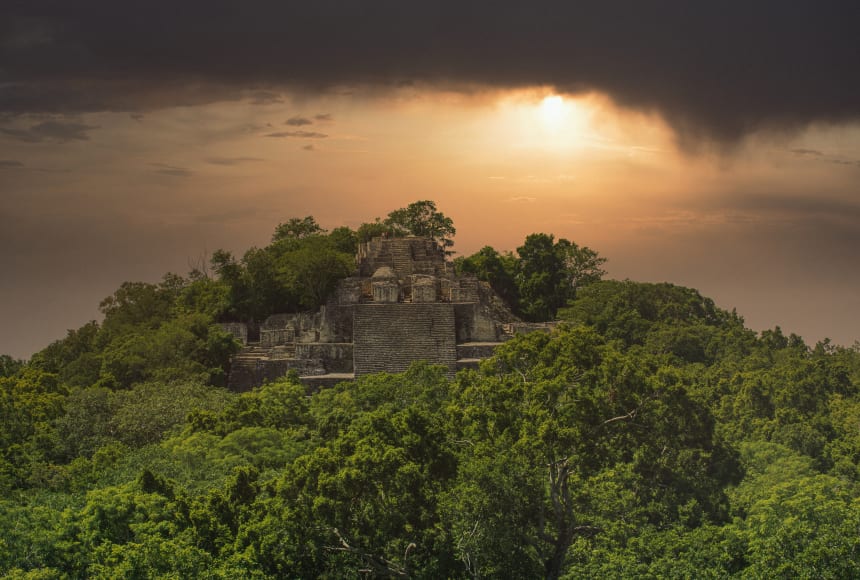ARTICLE
leveledARTICLE
Exclusive: Laser Scans Reveal Maya “Megalopolis” Below Guatemalan Jungle
Exclusive: Laser Scans Reveal Maya “Megalopolis” Below Guatemalan Jungle
A vast, interconnected network of ancient cities was home to millions more people than previously thought.
Grades
3 - 12
Subjects
Anthropology, Archaeology, Geography, Physical Geography, Social Studies, Ancient Civilizations
Image
Mayan Calakmul Pyramid
Pyramids, like Calakmul, in Campeche, Mexico, are iconic of the Maya. But infrastructure, its roads and irrigation, were the backbone of Maya civilization.
Andy Cannon/Shutterstock

Media Credits
The audio, illustrations, photos, and videos are credited beneath the media asset, except for promotional images, which generally link to another page that contains the media credit. The Rights Holder for media is the person or group credited.
other
Last Updated
April 19, 2024
For information on user permissions, please read our Terms of Service. If you have questions about how to cite anything on our website in your project or classroom presentation, please contact your teacher. They will best know the preferred format. When you reach out to them, you will need the page title, URL, and the date you accessed the resource.
Media
If a media asset is downloadable, a download button appears in the corner of the media viewer. If no button appears, you cannot download or save the media.
Text
Text on this page is printable and can be used according to our Terms of Service.
Interactives
Any interactives on this page can only be played while you are visiting our website. You cannot download interactives.
